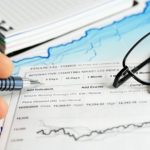
The Australian dollar (AUD) has experienced a modest decline, dropping approximately 0.4% at the time of the report, performing slightly weaker than its currency peers. The revision in GDP estimates is partly due to an unexpected current account deficit of AUD 4.9 billion in 1Q24, contrasting with UBS’s forecast of a AUD 6 billion surplus.
The deficit is largely attributed to revisions in travel data and the reintroduction of the National Visitors Survey, which have led to retrospective adjustments as far back as late 2022.
According to UBS, net exports are anticipated to subtract 0.9 percentage points from GDP, more than the consensus estimate of a 0.6 percentage point deduction. However, potential downgrades in this area might be balanced by upward revisions in private spending, leaving the overall trajectory of GDP growth relatively stable.
In other economic developments, the Australian Government Fair Work Commission’s decision to increase minimum wages by 3.75% in July, which affects a smaller portion of employees, came in below UBS’s estimate of around 4%. Conversely, signs of a modest revival in manufacturing PMIs and a strong monthly increase in house prices have been observed.
UBS also noted a lowered risk of further interest rate hikes by the Reserve Bank of Australia (RBA) and continues to anticipate the first rate cut of 25 basis points in February 2025. The firm has extended its AUDUSD forecasts, which remain unchanged, adding a June 2025 target of 0.70.
From an investment perspective, UBS maintains a preference for the AUD, advising investors to sell AUDUSD’s downside price risks and to remain long on the AUDEUR. Additionally, they suggest going long on the AUDNZD at 1.08 or below over a six to twelve-month horizon.
The firm also outlined boundaries based on technical indicators, with key moving averages providing support around 0.653–0.657. Key risks to the AUDUSD include potential hawkish moves by the U.S. Federal Reserve, geopolitical tensions between the U.S. and China, Chinese economic downturns, or an unexpected rate cut by the RBA.
This article was generated with the support of AI and reviewed by an editor. For more information see our T&C.
To read the full article, Click Here

